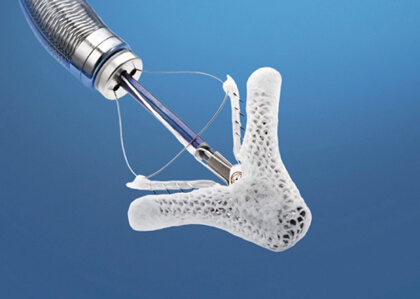Severe mitral regurgitation is associated to cardiac failure and hospitalization and over time is accompanied by kidney failure, which leads to higher mortality.

In the COAPT study, in patients with low ejection fraction, MitraClip showed benefits over medical treatment, but there was an important group of people with kidney function deterioration.
The evolution and benefit of this device in this group had not been yet assessed and at present there is little evidence about it.
The COAPT trial was analyzed and three groups were established according to glomerular filtration: no renal deterioration when glomerular filtration was ≥60 mL/min/1.73m2; moderate deterioration when it was between 30–,60 mL/min/1.73m2; and severe deterioration when it was30 mL/min/ 1.73 m2.
In addition, there were 37 patients (6.1%) on dialysis. 13 of these patients received MitraClip and 24 optimal medical treatment at maximum tolerated dose.
They looked at 606 patients, 144 presenting severe deterioration (23.8%), 323 moderate deterioration (53.3%) and 139 no renal deterioration (22.9%).
Patients with moderate and severe deterioration were older, had more comorbidities (diabetes, coronary artery disease, ischemic cardiomyopathy, anemia) higher NT-proBNP elevation, and higher surgical risk.
At 2-year followup, baseline renal function deterioration was associated to higher mortality or hospitalization for cardiac failure (p<0.0001). In addition, both mortality and rehospitalization were higher when analyzed separately. Patients on dialysis presented a 68.7% rate of death and hospitalization for cardiac failure and 33.4% rate of hospitalization for cardiac failure.
MitraClip reduced renal function deterioration (P Interaction=0.62) vs. complete medical treatment at maximum tolerated dose, reduced renal function deterioration onset [2.9 vs. 8.1%, hazard ratio (HR) 0.34, 95% confidence interval (CI) 0.15–0.76, P=0.008] and the need for dialysis (2.5 vs. 7.4%, HR 0.33, 95% CI 0.14–0.78, P=0.011).
Conclusion
Kidney function deterioration in patients with cardiac failure with mitral regurgitation enrolled in the COAPT study is a strong predictor of death and hospitalization for cardiac failure at 2 years. MitraClip reduces kidney deterioration onset and the need for dialysis, contributing to improving prognosis after percutaneous repair of the mitral valve.

Dr. Carlos Fava.
Member of the Editorial Board of SOLACI.org.
Original Title: Impact of baseline renal dysfunction on cardiac outcomes and end-stage renal disease in heart failure patients with mitral regurgitation: the COAPT trial.
Reference: Nirat Beohar, et al. European Heart Journal (2022) 43, 1639–1648.
Subscribe to our weekly newsletter
Get the latest scientific articles on interventional cardiology





